Bimotal Elevate Review | Adding the “e” to MTB
The Bimotal Elevate finds a clever way to introduce a motor to acoustic bikes. It’s power-packed and removes in mere seconds to return your bike to its original handling.
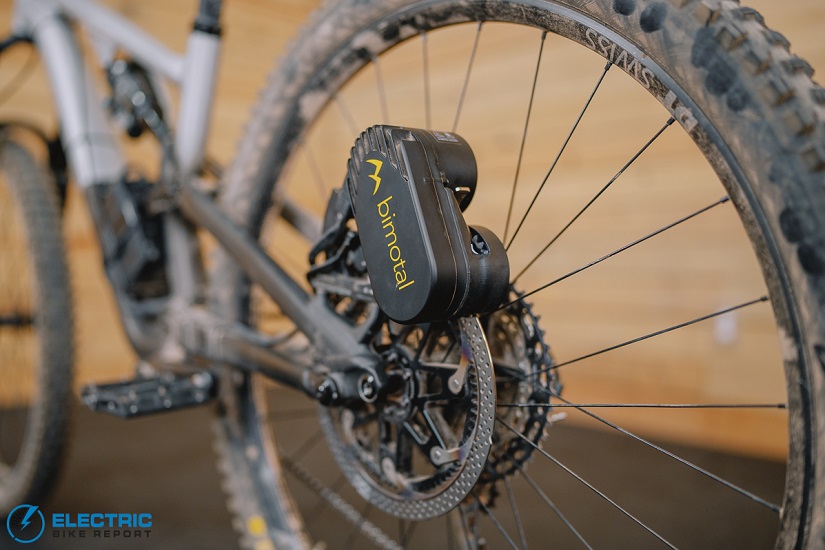
“I like my bike now; I just wish it was electric” is a sentiment I’ve heard a thousand times from riders on standard mountain bikes who haven’t made the electric leap. One of the biggest problems in mountain biking that eMTBs solve is taking the sting out of climbs so you can stay fresh for the fun stuff.
But eMTBs come with their own tradeoffs: extra weight, different handling, and buying into a second bike isn’t cheap, or you’d have to consider saying sayonara to the ride you like now for the cash/garage space to make the switch.
The Bimotal Elevate we’ve been reviewing is a clever conversion kit that aims to address all of those problems with a unique brake-integrated mounting system that allows for quick motor and battery attachment and detachment to your current acoustic bike. Strap on the motor for an easier climb, then stow the motor and battery in a pack to restore your bike’s handling to exactly how it was before. In other words, it’s a “have your cake and eat it too” solution — at least in theory. But how does it do in practice?
Overall, the execution is impressive. The motor feels punchy (which our testing data more than backed up), and it has a solid power-to-weight ratio. It’s a Class 2 throttle-based system, so while it’s not ideal for highly technical climbs, it is a super useful shuttle service that helps you breeze through the more tiring parts of the ride so you can extend your time ripping through XC trails, berms, and downhill.
This isn’t a true eMTB replacement — at least not yet. But if you’re already enjoying riding your acoustic bike, the Elevate will unlock even more for you. It’ll help you squeeze in more laps or longer rides. It’s essentially adding new features to what you already have, making it an additive upgrade to your experience.
Even though you can stow the motor and battery, it isn’t a necessity. The total added weight is closer to that of SL eMTBs, so if you’re not too concerned about a few extra pounds of unsprung mass on a full-sus, it’s fully capable of hitting the downhill with you — where it sits surprisingly solid on its mount.
What it can do today in electrifying a beloved bike is highly impressive, and the future applications are even more tantalizing if they’re fully realized. For more on what it can do today and what’s coming next, check out how it performed in our testing below.
 Pros
Pros- It is compatible with numerous bike frames, provided they use 4-piston calipers. The unique rotor-drive design can fit a wide range of bikes or make it easier to power up all your bikes with one shareable motor.
- Impressive power-to-weight ratio. The motor and battery weigh 6.7 lbs, which is on par with many SL e-bikes, but it delivers better power than most.
- Top-end power is capable of climbing steep grades.
- Quick battery and motor removal. If you want to ride downhill without any tradeoffs, you can remove the motor and battery and stow them in a pack in just seconds.
- Doesn’t wear down bike components. Unlike mid-drives, which can wear chains and cassettes faster, this system directly drives through its rotor-mounted gear.
- In certain riding scenarios, riding with the motor on can actually help increase traction.
 Cons
Cons- It’s currently a Class 2 throttle-only system. It will have trail access limitations, and while it’s helpful for climbing, it’s not ideal for technical climbs. (Note: Bimotal is working on a PAS system, and current motors are claimed to be compatible.)
- Battery placement replaces bottle cage and may not fit all triangles.
- Battery: 300Wh, mounting system integrates with bottle cage bosses.
- Display: N/A
- Motor: Elevate, 750W, 50Nm continuous torque (70Nm peak)
- Pedal Assist: Throttle only. PAS coming soon, current units will be compatible upon release.
- Claimed Range: 10-20 miles, or 1,500-2,500 ft climb
- Throttle:Modular lever throttle
- App:Bimotal
- UL Certification:
- Compatibility:Must have 4-piston hydraulic disc brakes to accommodate the rotor-gear. Brake mounts must be Post Mount 140-200/203mm or ISO. The disc brake needs to be located above the rear frame triangle (external post-mount). Low post and flat mount compatibility is coming soon.
- Total system weight: 8.8 pounds
- Motor weight: 3.3 pounds
- Battery weight: 3.4 pounds
- Mounting kit weight: 2.1 pounds
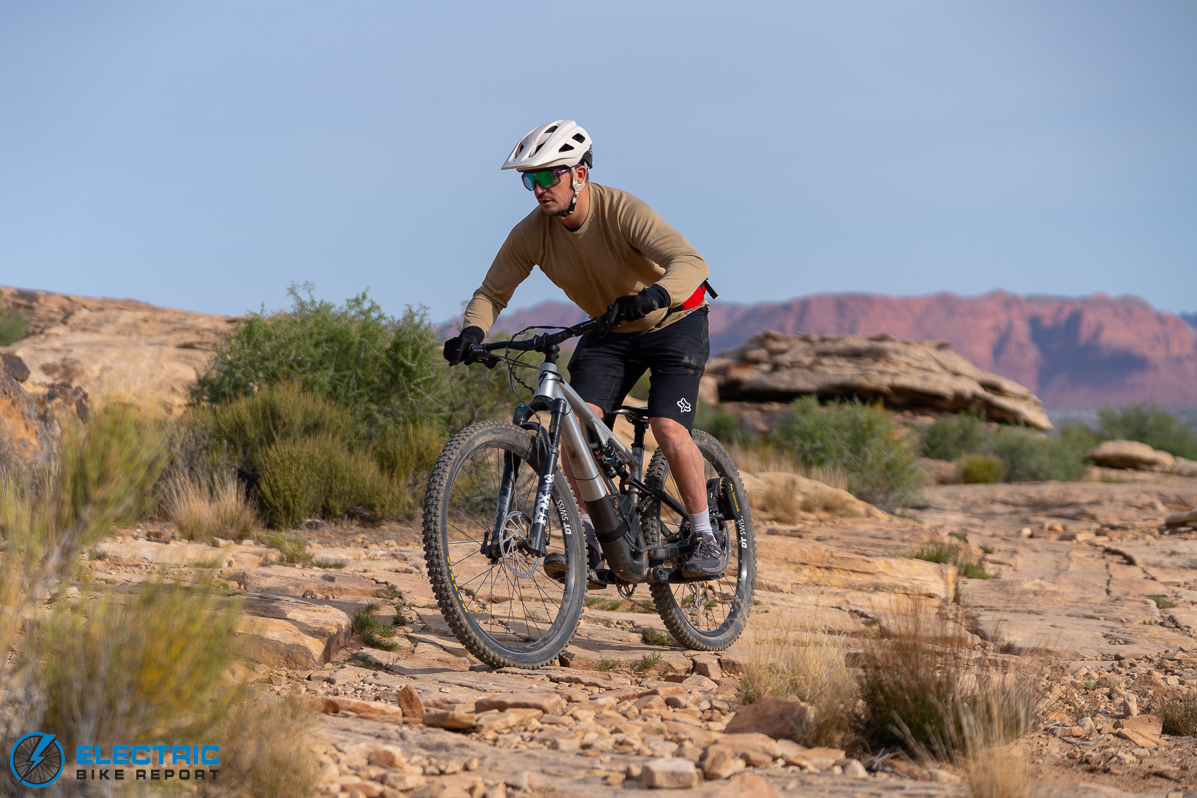
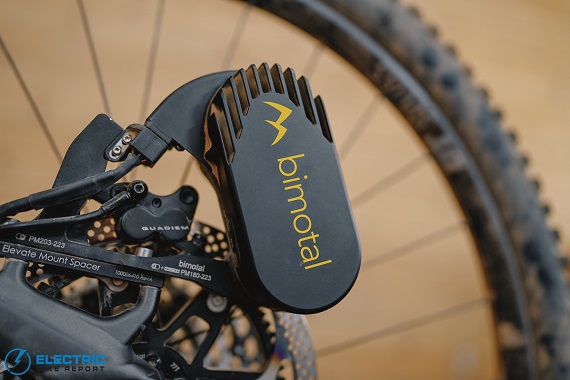
Lightweight and a modest form factor, the Elevate can produce impressive power.
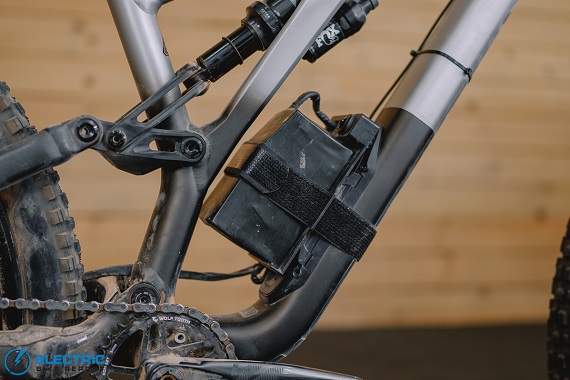
The 300Wh battery is a small size, but a sensible option for a retrofit system that has to work its way into different front triangles.
Bimotal Elevate Review: Motor & Battery
The Elevate motor is a very good mix of lower weight (3.3 lbs), a middle amount of torque output (70Nm max), and a high power output (750W). The system does a really good job and can effortlessly boost a rider on its own when pushing down on the throttle, but the system will more efficiently consume battery if you throttle and pedal at the same time. There’s some modulation in the throttle, but largely, you sync your pedal efforts to what the motor’s doing.
In terms of it’s overall feel it strikes a fairly nice balance; one of my primary concerns with any throttle I’ve used offroading is having the bike shoot out from beneath me when climbing (it’s happened, a lot) and this has enough power to move even my 230 lbs frame up steeper grades without my help in pedaling, but it’s not at a risk for gashing up the trail either.
I’ve tested conversion kits that replace the wheel with a hub drive, and I’ve tried a few friction drives before, but this is something else entirely. The rotor gear that replaces your brake rotor is a nice design that is impressively light.
A huge perk of the Elevate system is the ability to pop the motor and battery off in just seconds. Removing the motor is similar to pulling seat clamp levers, and you remove the battery by unstrapping the velcro. Both come off in less than a minute for easier transport or for riding unencumbered by the added bulk (leaving behind 2.2 lbs worth of rotor gear and battery mount). Other than cost, handling sacrifices are a leading reason people don’t swap out acoustic bikes for eMTBs, so the ability to ditch most of the extra weight and feel your bike ride like it always has is an impressive product.
A huge perk of the bike is that you can buy several mounts, but only one motor and battery. If you have a downhill and XC bike, you could economically electrify both.
The largest current differentiator between engaging the Elvate vs a standard eMTB boils down to the throttle. Bimotal says a pedal assist system (PAS) function is in the works, and it will be compatible with the motors currently being sold.
If they can unlock a universal torque-sensing system — or even a next-level cadence-based one — it could catapult the Elevate system forward, making it a kit that could truly rival eMTBs. The motor would then become much more useful for technical climbing, but that’s admittedly a tough nut to crack to make that compatible with every bike out there. We’ll keep our fingers crossed that it comes soon, though.
The battery is on the smaller side, which is sensible given its attempt at a near-universal fit. Some front triangles might not house it well. It’s admittedly a bit DIY-looking with a squared all black shape, and something sleeker-looking down the line with a basic LED charge indicator would be nice, but it’s hardly a deal-breaker as is.
The battery can be charged up in as little as 90 minutes, and you can purchase backups if you have longer rides in mind.
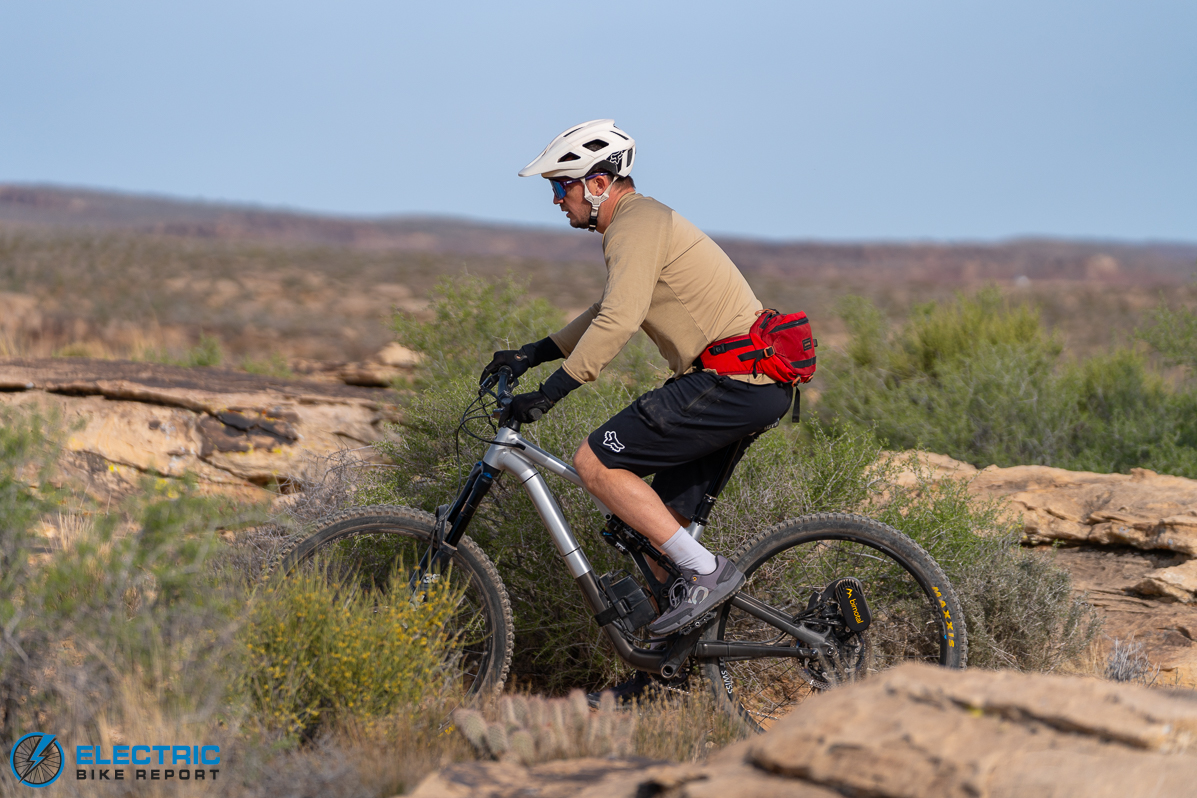
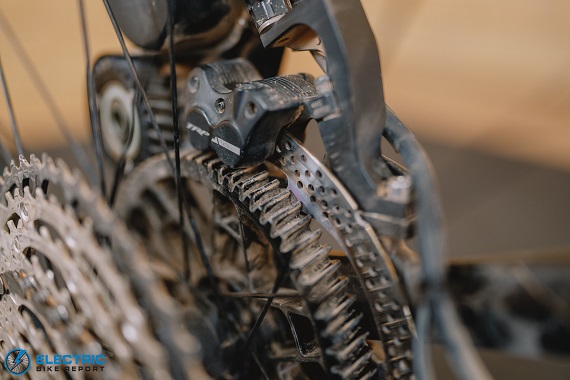
The rotor gear is a smart design that can withstand the powerful force of the motor, and it’s adaptable to many modern mountain bikes.

The power button to activate the system. It would be nice if some sort of LED battery indicator would be included in future iterations.
Bimotal Elevate Review: Display & App
The app itself is fairly minimalistic, but it does allow for useful customizations.
If you use a phone mount, you can check the real-time power output in watts and torque, and it has a temperature gauge of the motor to know if it’s running too hot.
There are three different ride models to pick from: Range, Trail, and Boost. Each comes with preset torque, watt, and throttle responsiveness levels and a cap at 20 mph speeds.
You have the option of tailoring the outputs to your preference across the three modes. We didn’t deviate much from their preset limits, but it’s nice to have options.
One way Bimotal could improve the experience is by adding a button you fix to the handlebars that allows you to toggle the different modes. We really didn’t feel the need to change them too much, but since trails can vary wildly, it would be nice to be able to change the settings on the fly rather than having to stop and get your phone out.
The app is still in its infancy, and there’s a lot more data we’d like to see added to it (like odometer settings, maintenance reminders, etc.), but for now,w it’s straightforward, easy to tailor, and easy to use, which is a solid start.
Bimotal Elevate Review: Range Test
In our testing, it covered 15.7 miles with 1,179 feet of elevation gain, and that’s with near-constant use of the motor.
The results lined up with the brand’s expectations, and since we likely used the system a bit more aggressively than necessary (again, it’s really intended for key climbing sections, not constant engagement like most eMTBs), it was a pretty solid showing.
This is a one-of-one unit we’ve tested so far, so I don’t have comparative data yet — but honestly, I was expecting something closer to the 10-mile mark. My gut reaction was that it was impressive how much climbing we got out of a 300Wh battery.
Since the battery packs are small by design (to more easily fit inside different bike frames), it’s also nice that you can pick up a spare and quickly swap batteries when needed to keep the ride going.
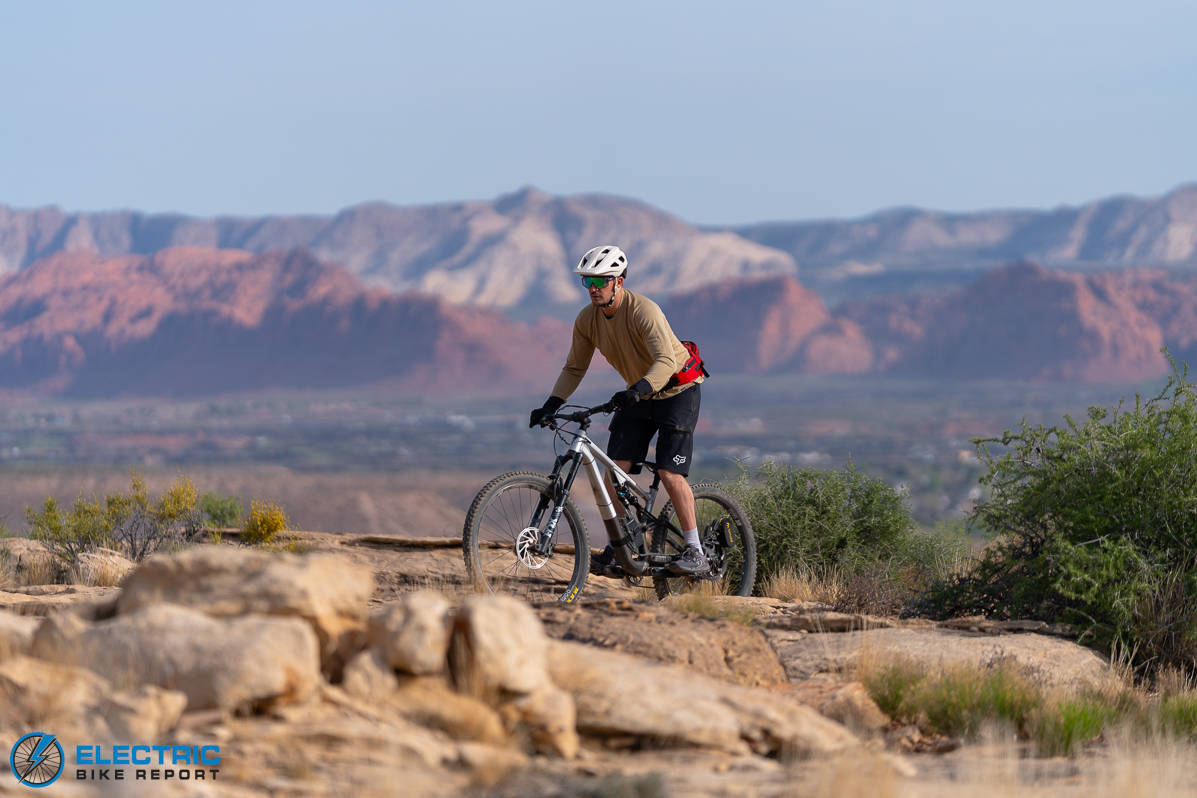

If you have range concerns, you can buy multiple battery packs. They swap out in under a minute.
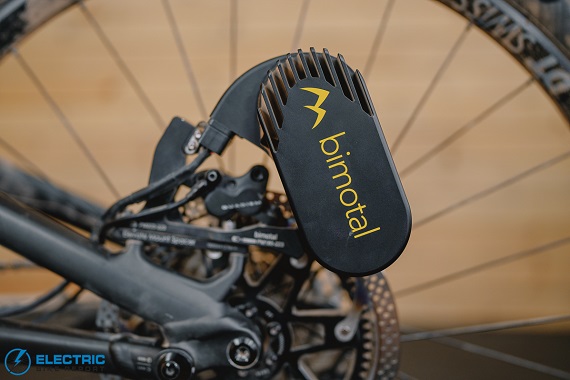
The mounting hardware goes on seatstay brake mounts. Mounting solutions for chainstay mounts are in the works.
Bimotal Elevate Review: Hill Test
The first is our standard test for every e-bike we review — the beloved Hell Hole Trail — where everything from cargo bikes to commuters gets a turn. It’s a ⅓-mile paved climb with a steep 12% average grade. The second is the Water Tower climb, an eMTB-exclusive dirt trail spanning 0.86 miles with a 5.5% average grade. We did both tests on the maxed out Boost setting.
On Hell Hole, we made it to the top using just the throttle in 1:16, with a 14.3 mph average speed. When we ran it again with a mix of throttle and pedaling, the time improved to 1:06, with a 16.4 mph average. The throttle-only result currently ranks 30th out of 151 throttle tests accomplished by our main tester, Justin, while the pedal-assisted result ranks 19th out of 227 bikes he’s tested.
When taken to the Water Tower climb — where we tested it with a mix of throttle and pedaling to match the conditions of other eMTBs we’ve reviewed (which don’t use throttles) — it reached the top in 3:14 at 17 mph. That blazed past the average of 3:35 and 14.6 mph.
Here’s what I love about those results: that kind of power is seriously impressive and speaks to the level of engineering here. Yes, this setup has some advantages since it’s one of the lighter systems we’ve tested, and the total weight with the bike its on also undercuts most eMTBs, but still — those are blazing times.
Another nice part about the system is that it doesn’t add significant stress to the chain, cassette, or wheel — at least not in the way you’d expect from standard hub drive conversion kits. Applying the power directly to the rotor gear localizes most of the stress there. Bimotal says the plastic gear on the motor should be good for 1,000 miles, while the metal gear on the brake is rated for 3,000. That’s a lot of mileage, and it’s nice that both parts are replaceable when the time comes.
The results further support the argument that if the shuttle is shutdown, you might be able to find ways to still get laps in by blazing up the trail with the help of a surprisingly capable motor.
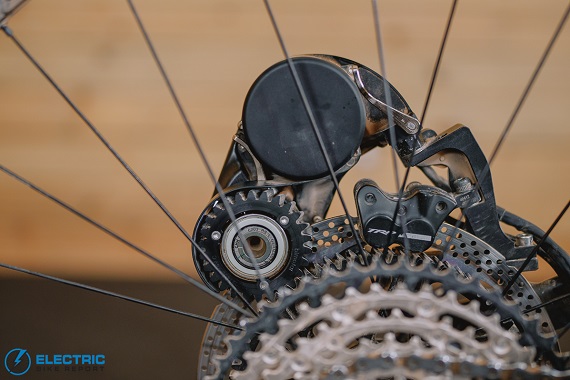
Hear you can see the plastic gear of the motor interlocking with the larger metal gear rotor. The advantage? No stress added to other components.
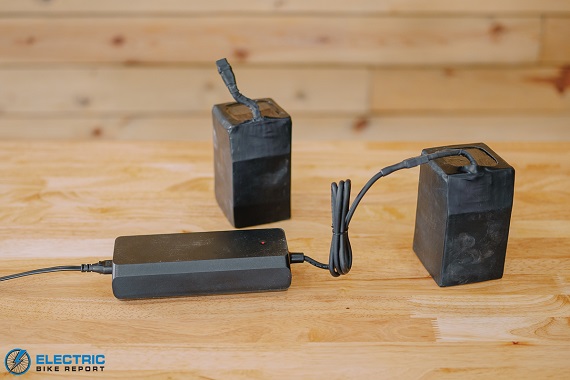
With the included charger you can get a battery to 100% in as little as 90 minutes.
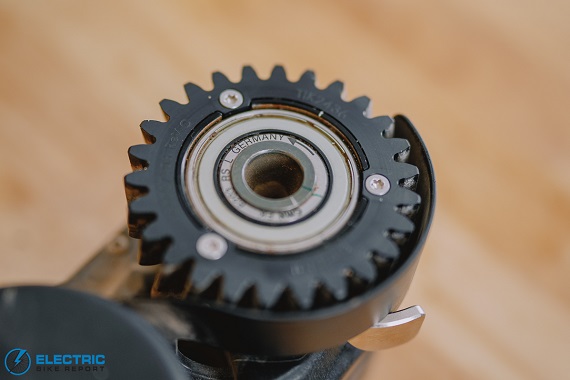
A close look at the plastic gear of the motor that’s rated for 1,000 miles of use (3,000 on the rotor gear).
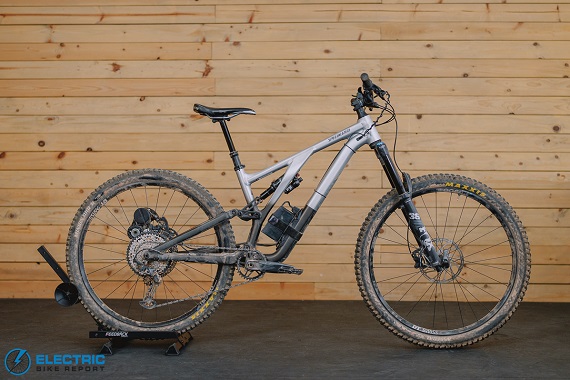
The battery, motor and cabling are noticeable, but a tradeoff that comes with the quick removal system.
Bimotal Elevate Review: Ride Quality
I appreciate the sturdiness of the materials, too. The mounts all feel solid, and the cables running from the motor to the battery to the throttle are well-insulated, meaning you can ride in any weather on any trail with little worry.
Most of Elevate’s downsides aren’t specific to the model itself but are part of the natural give-and-take that comes with conversion kits.
eMTBs have the advantage of being designed around a motor, so they can address a lot of quirks you’ll otherwise have to accept with a kit — like exposed cables, batteries replacing bottle cages, and smaller battery sizes.
The Elevate delivers great power, but it’s difficult to deploy that power on technical climbs. Holding the throttle and pedaling at the same time is tricky when grinding up a techy climb, and while the throttle is modular, it’s not something you can easily control when climbing over chunky or rooty terrain.
Also, the motor is pretty loud. For something so small to put out that much power, maybe that’s part of the equation, but if you do a lot of Boost-level riding, the noise is hard to miss. Since it pushes the rotor directly — and can’t leverage the bike’s drivetrain like mid-drives do or, you know, just be muffled within the frame itself— the extra noise isn’t unexpected. But still, it’s pretty noisy.
But if deployed correctly, using it to spot you on smoother sections when you need a breather and to help you sail up greenline and doubletack, the utility of the Elevate is hard to deny.
Bimotal Elevate Review: Summary / Where to Buy
With that in mind, the Bimotal Elevate works surprisingly well. A motor I can pop on and off feels futuristic, while the power it produces is seriously impressive. I can outfit it on multiple bikes to “bring them all online,” so to speak, and even though I think PAS functions are it’s full potential, the throttle plus pedal experience now is still a good one when deployed correctly to climb more easily and gain some speed on flats.
This product works great for extending the rides you take now. For those who are only able to squeeze in one lap before work at their favorite local loop, this could be what helps you get in two in the same amount of time, or turn a 10 mile ride into a 15 miler.
It’s a really cool product, and just like I remember early iPhone users sharing their phones with people who had heard of it before, I think there will be a growing contingent of people using this on the trails showing other mountain bike riders what an Elevate system can do, leaving people imaging how it would feel on their own bikes.
Happy Riding! Make sure to let us know if you have any questions or if you think we left anything out in this review of the Bimotal Elevatedown in our comments section.




Got the email…..eagerly read the article, clever design & setup, but the PRICE is just silly @ $2k. This opinion is based on riding ebikes for around 11 yrs, and owning 41 ebikes! 🙂
I love the idea of it and would b really interested if $800-1000 range
This makes sense to me if I can retrofit it on my Ramblas to function as a Class 2 conversion and a swappable range extender, and also use it on my Orbea Wild to ride to the trailhead and back to save battery, and then remove it once I’m there.